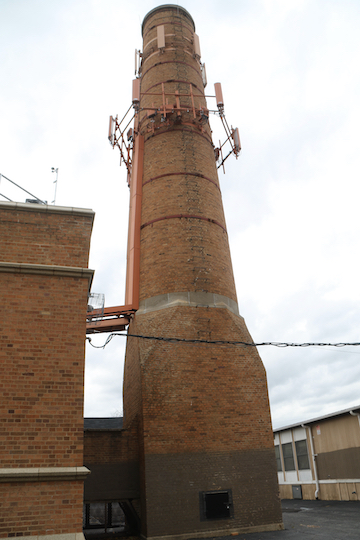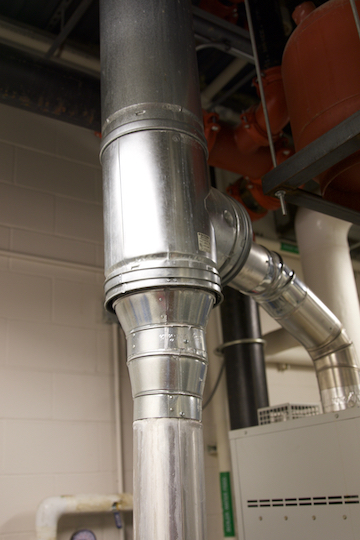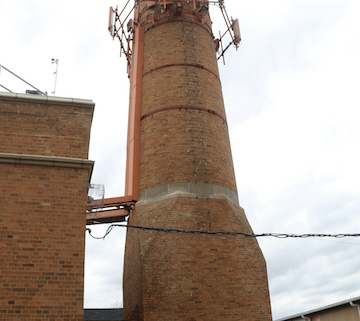Detectors Save Lives in School Carbon Monoxide Poisonings
Carbon monoxide detectors can save the lives and brains of school children in school carbon monoxide poisonings, illustrated by the tale of two 2015 poisonings within six weeks in the Chicago Public Schools.
The school boiler room has been a popular theme in modern horror movies. Cultural historian, DJ Skas postulated that horror stories are a reflection of our societal fears. But even though Freddy Krueger is unlikely to make an appearance in the basement of your child’s school, an invisible and deadly killer can be there lurking…carbon monoxide.
Schools have traditionally been the central hub connecting communities and the impact of any type of harmful occurrence is felt deeply by surrounding communities. This is something that goes hand in hand with school carbon monoxide poisonings which tend to affect large numbers of people in often unforeseen ways. Children are among the most vulnerable to carbon monoxide poisoning as the ultimate damage often cannot be assessed until years after exposure. Considering the increased vulnerability of children, why then are schools not the frontline battlefield in carbon monoxide prevention?
No Waiver for School Carbon Monoxide Poisonings

One of Chicago’s school carbon monoxide poisonings happened at the Prussing Elementary School on October 30, 2015.
As parents we are familiar with waivers signed at the beginning of school years. There are Activity Participation waivers which are used for student activities, clubs, special classes, after school programs, work experience programs, off-site training, team participation, band, cheerleading, dance team and field trips. These waivers include transportation to and from events. But no where do I find waivers which ask parents to agree to disregard the school’s responsibility in providing a safe environment to learn in. Yet as we will see, schools have failed to provide basic protection against carbon monoxide poisoning in many cases. And in some cases only when litigation for injury enters the picture
School carbon monoxide poisonings keep happening. USA Today found that more than 3000 students had been evacuated in at least 19 incidents of findings of dangerous carbon monoxide levels in schools since 2007. https://www.usatoday.com/story/news/nation/2012/12/05/schools-carbon-monoxide/1748361/
In 2012, an Atlanta elementary school was evacuated and at least 49 people were treated for carbon monoxide poisoning. The school was not equipped with carbon monoxide detectors.
In 2014, a malfunctioning boiler sickened kindergarten students in a Douglas town complex in Massachusetts. The complex housed the Town Hall, police station and elementary school. There were no carbon monoxide detectors in use. This inspired Douglas Fire Chief Kent Vinson to advocate repeatedly for carbon monoxide detectors in schools. His disappointment was that year after year such legislation withered before the end of each legislative session. “It’s extremely frustrating because this is really a no-brainer,” he said. “And it’s obviously political, which is sad, because we’re trying to protect children.” https://www.newburyportnews.com/news/regional_news/bills-requiring-co-detectors-in-schools-languish/article_89e8ea72-13ac-5b91-abd5-0f825a17ee4c.html
In Springfield, MN in February, 2014, thirty children were taken to the Mayo Clinic Health System after suspected carbon monoxide exposure in their school. Children experienced extreme nausea and other classic symptoms though initial tests of the premises were inconclusive. It was later determined that the possible cause was “mass psychogenic illness” even though no details were released regarding the possibility that the building had been sufficiently aired out prior to testing. And public information on the findings of the Mayo Clinic are not available though it was presumed that carbon monoxide poisoning had been ruled out. There is little information on the details surrounding this incident. A mass psychogenic illness seems to be an unlikely explanation.
Brain Damage or Psychogenic Illness?
In fact, a little research in the incidence of mass psychogenic illness produces some very bizarre scenarios. Not only is it extremely rare, but is often not associated with physical illnesses. One of the most recent being the phenomena of clown sightings in 2016. This seems quite a stretch when comparing this type of event to an incident involving a negative physical response by a number of children. Historically, many of the cases of mass psychogenic illness, related to illness specifically, seem to point to some type of toxic element in the environment which may have been undiscoverable at the time it occurred due to lack of technology. Other cases involve hysterical behavior instigated by a single person which spread to their peers. There is very little proof in all of recent global history that would point to mass psychogenic illness as a likely explanation.
Illinois School Carbon Monoxide Poisonings

The North Mac school carbon monoxide poisoning occurred because this pipe broke. There were no CO detectors in the school.
In Illinois, September, 2014, the campus of the North Mac Intermediate and Middle School were evacuated. There were approximately 640 students on campus. That morning, 150 students and faculty were showing symptoms of carbon monoxide poisoning and nearly 60 people were transported to local hospitals. The contractors involved in installing and maintaining the hot water heaters were negligent. In this case, carbon monoxide was indeed detected on the scene. The Brain Injury Law Group represents survivors from this poisoning.
As a result of this incident the school determined that carbon monoxide detectors would be installed. This is of very little comfort to those who had already suffered from exposure and the potential for permanent damage which followed. One can only wonder about how insignificant the cost of having previously installed detectors might have been when weighed against the costs of shutting down to address the problem after the fact. As well as the emotional aftermath which parents and students must have felt during that traumatic episode. It is not uncommon for children to exhibit fears over returning to a site they have experienced as dangerous in some way.
One would presume that the recurring incidents in our schools would bring immediate action of the part of legislators. But in Illinois, even after the North Mac incident, legislators were slow to act on a statewide level. Legislation was indeed finally passed but would not go into effect until January of 2016. As we shall see, that enactment of statewide legislation came too late for some, but just in time for others.
It is often argued, especially when pertaining to older structures, that the children do not sleep on the premises so carbon monoxide detectors shouldn’t be required. I can imagine the parents might cringe at this statement as we send our children, by law, into someone else’s care and thus we expect that the hours spent on those premises are safe and conducive to health, not potentially deadly. And carbon monoxide can kill in minutes, regardless of the time of day.
I think that what is the most astonishing is the number of actual incidents that don’t make headlines. Fire departments in every state recount the number of times they are called to a school for suspected carbon monoxide poisoning. It is almost impossible to determine how widespread positive tests for carbon monoxide are. And sadly how many go unreported because symptoms are overlooked. But one must wonder when one state reports 40 suspected incidents per year and yet only a handful nationwide ever make headlines.
Regardless of whether the legislation is influenced by economic factors or politics, only a handful of states require carbon monoxide detectors in schools. But statewide or federal regulations are severely lacking.
There has been one ongoing argument over who is financially responsible if legislation is passed. Should the burden be on the school system or taken on by the state itself? In most cases it is agreed that the state take on the financial responsibility which makes it a political issue in some instances. What does it take to pass a carbon monoxide detector mandate? At what level is the danger considered significant enough to take action on?
Two Chicago School Carbon Monoxide Poisonings
The school carbon monoxide poisonings, in the same school district, six weeks apart show the dynamic difference detectors can make. Both were before the effective date of the Illinois law that was passed as a result of the North Mac Poisoning discussed earlier. But in the first, the Chicago Public Schools didn’t put in detectors, in the second, because of the litigation from the first, detectors did get put in.
On October 30, 2015, seventy-one students and seven adults for the Ernst Prussing Elementary School were transported to Chicago hospitals on a Friday morning in October. Dangerous levels of carbon monoxide were found at the scene while all of the students were assembled for a Halloween parade in the school hallways. A student had passed out and soon 10 ambulances were dispatched and evacuation proceeded. The school reported an “environmental situation on its website. The Chicago Tribune reported:
“A fire engine and an ambulance were initially called to the school for a “sick child in the gym,” said Fire Commander Curtis Hudson. Ambulance crews were equipped with carbon monoxide meters, which “started going off with readings over 200,” Hudson said.”
A boiler was determined to have been the source of the poisoning. First responders were able to bring the carbon monoxide levels down by shutting down the boiler and ventilating the building. Further investigation revealed problems with the ventilation system, inspections and maintenance. As a result, many parents waited for two hours to discover whether their child had been hospitalized, an unnecessary trauma for both parent and child. It is particularly poignant to read the accounts of children dressed in their Halloween costumes undoubtedly excited by the holiday season and ultimately victims of sub-par maintenance and inspection in their school.
The Chicago Public Schools got sued over the Prussing school carbon monoxide poisoning early in November of 2015. That lawsuit generated more negative publicity for the school district than the initial news accounts did. Lack of carbon monoxide detectors in Prussing was a big focus of that negative publicity for the school. The Chicago Public Schools moved up the timetable to put CO detectors in every school, including the Horace Mann Elementary where detectors were installed a month before the January deadline. Shortly after the alarms were installed, they were tripped as staff entered the school around 6:30 AM on a Thursday morning. However the school administration did not contact the fire department until 2 hours later, around 8:30 am. 104 students and 7 staff members were hospitalized for precautionary reasons as a result. In this case the failure to act was questioned by the Chicago Teachers Union organizer, Curtis Bynum, and many parents as well. But this situation might have been much worse as the detectors did alert early in the day even if response lagged unnecessarily. The exposure which occurred was minimized regardless. CPS had installed 5900 carbon monoxide detectors in the area just days prior to this incident. In this case, students were not evacuated but rather relocated to an adjacent campus.
In 2019 another Chicago school, this time in Burnside, was closed due to a gas smell noticed by the building engineer on duty. As the incident was reported 5:30 AM, there were no students in attendance and classes were moved to another location. A faulty boiler was determined to be the cause.
In 2019, in Alabama, Rainbow Elementary was evacuated and closed due to carbon monoxide levels. The cause was, again, a faulty boiler.
At some point, you must be wondering, are carbon monoxide detectors the only problem we need to address or does the problem go a lot deeper? Perhaps we should be looking in the boiler rooms for some answers? As I said in the beginning, the monsters we imagine may not be real, but the danger is. And somehow, we as a society, recognize this on a very primal level. We are aware that many schools are in older buildings and many are underfunded. Yet every day we send our children to these less than ideal situations, trusting that the most basic care has been taken toensure their safety. At the same time we applaud politicians who find ways to cut taxes and decrease funds for new construction and school funding in general. There must be a middle ground that does not place our children at risk.
It also brings up the question of air quality in schools in general. And the many ramifications of improperly installed ventilation systems. Especially in view of promises to increase safety in schools during Covid. How confident are we that air cleaning systems with be properly integrated with existing venting systems? Will inspections be done to ensure that all systems are compatible? Many questions for us to consider in the upcoming months as work to update ventilation systems begins.
This blog was written by Rebecca Martin.




Leave a Reply
Want to join the discussion?Feel free to contribute!